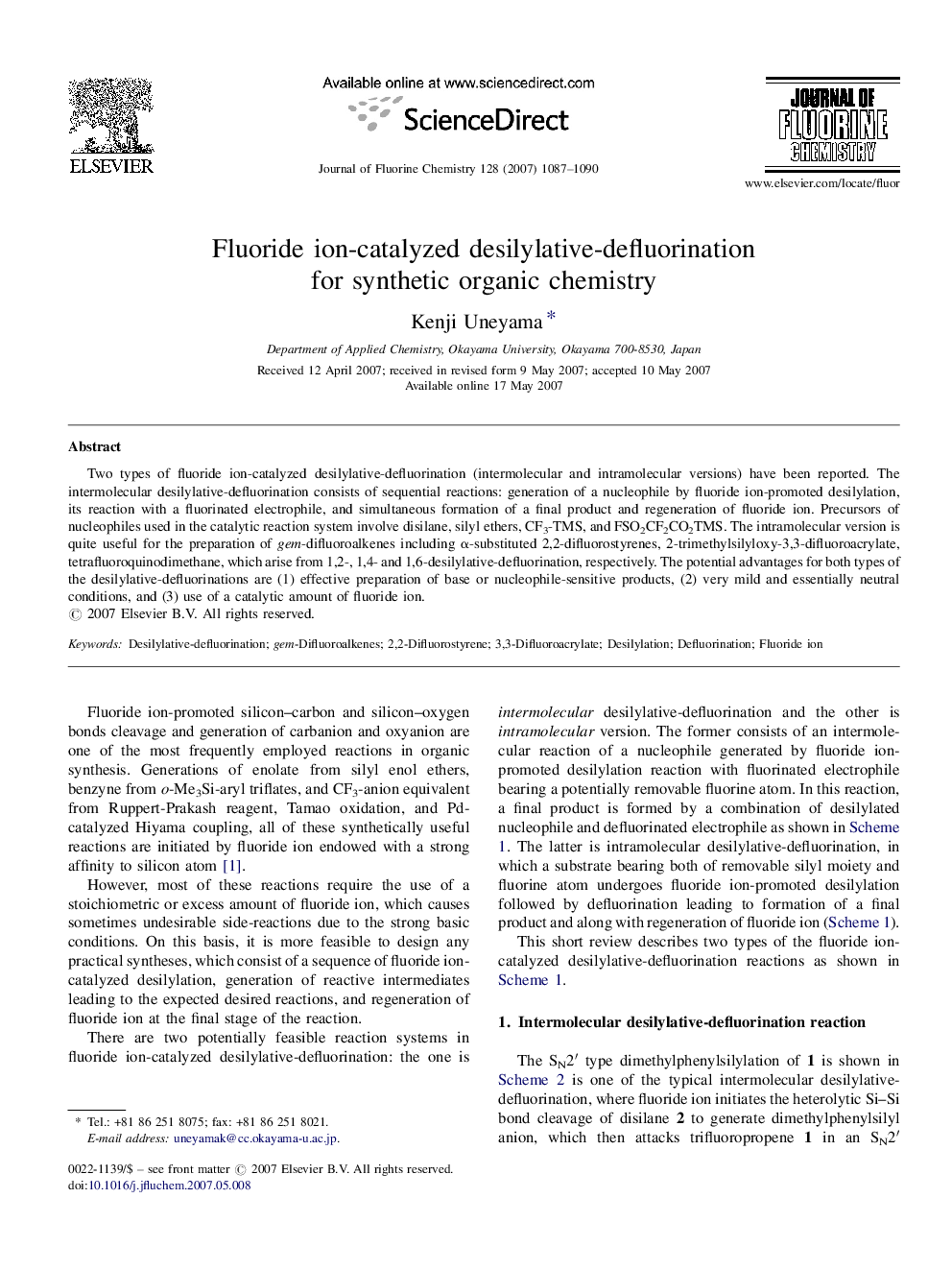| Article ID | Journal | Published Year | Pages | File Type |
|---|---|---|---|---|
| 1314792 | Journal of Fluorine Chemistry | 2007 | 4 Pages |
Two types of fluoride ion-catalyzed desilylative-defluorination (intermolecular and intramolecular versions) have been reported. The intermolecular desilylative-defluorination consists of sequential reactions: generation of a nucleophile by fluoride ion-promoted desilylation, its reaction with a fluorinated electrophile, and simultaneous formation of a final product and regeneration of fluoride ion. Precursors of nucleophiles used in the catalytic reaction system involve disilane, silyl ethers, CF3-TMS, and FSO2CF2CO2TMS. The intramolecular version is quite useful for the preparation of gem-difluoroalkenes including α-substituted 2,2-difluorostyrenes, 2-trimethylsilyloxy-3,3-difluoroacrylate, tetrafluoroquinodimethane, which arise from 1,2-, 1,4- and 1,6-desilylative-defluorination, respectively. The potential advantages for both types of the desilylative-defluorinations are (1) effective preparation of base or nucleophile-sensitive products, (2) very mild and essentially neutral conditions, and (3) use of a catalytic amount of fluoride ion.
Graphical abstractFluoride ion-catalyzed desilylative-defluorination (intermolecular and intramolecular) has been reviewed.Figure optionsDownload full-size imageDownload as PowerPoint slide
